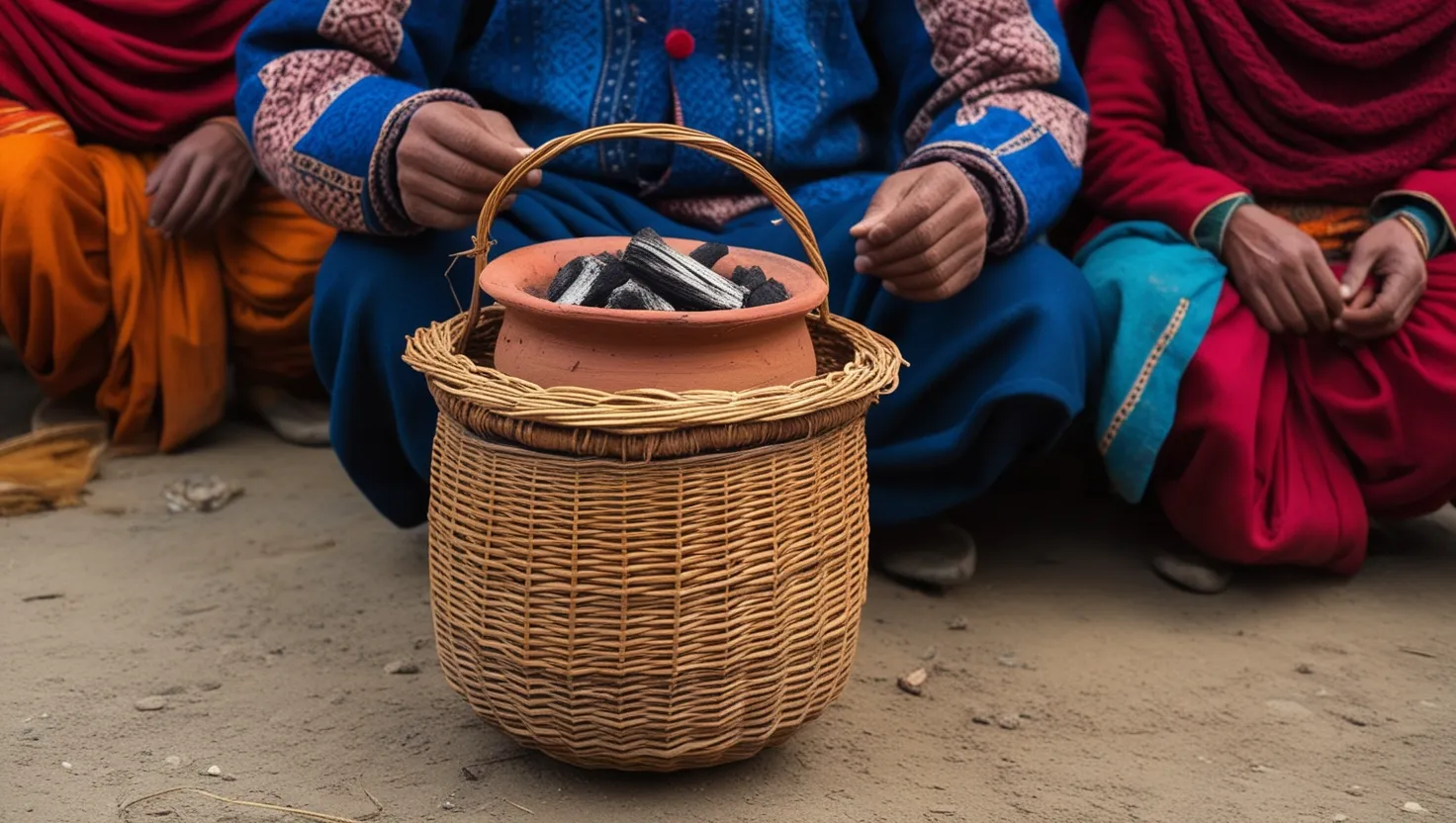
Nestled in the snowy Himalayan valleys, Kashmir has a unique winter tradition that keeps its people warm during the harshest months. This cherished companion is the Kangri, a beautifully crafted, hand-held heater that Kashmiri people have relied upon for centuries. Beyond its warmth, the Kangri carries a story woven deeply into Kashmiri culture, heritage, and identity. So, what makes this traditional item so special, and how is it crafted?
Table of Contents
What is a Kangri?
Description and Components
It is a traditional Kashmiri portable heater made of an earthen pot filled with charcoal embers, encased in an intricately woven basket of willow wicker. The basket not only insulates but also makes it comfortable to hold. People often place it under their clothing to stay warm during the freezing winter.
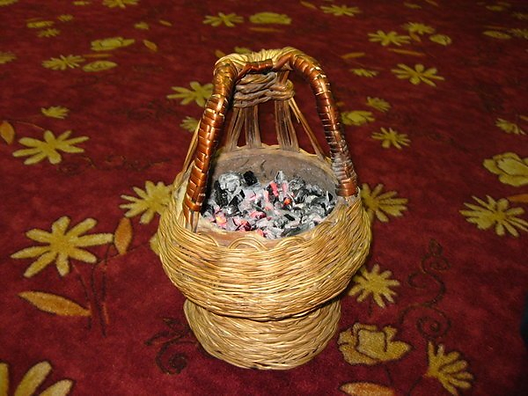
photo/soldierstoryofkashmir
Traditional Purpose of the Kangri
For generations, the it has been Kashmiri households’ go-to warming device. While modern alternatives like electric heaters exist, it remains unparalleled in its portability and cultural roots. People carry it throughout their daily activities, tucked under clothing or held in their laps, providing a close, reliable source of warmth.
The Origin and History of Kangri Making
Historical Significance in Kashmiri Culture
The exact origin is unclear, but it is believed to have been introduced centuries ago, potentially by Persian or Central Asian traders. Over time, it has become uniquely Kashmiri, embraced as a distinct cultural symbol that signifies the people’s resilience against the region’s freezing winters.
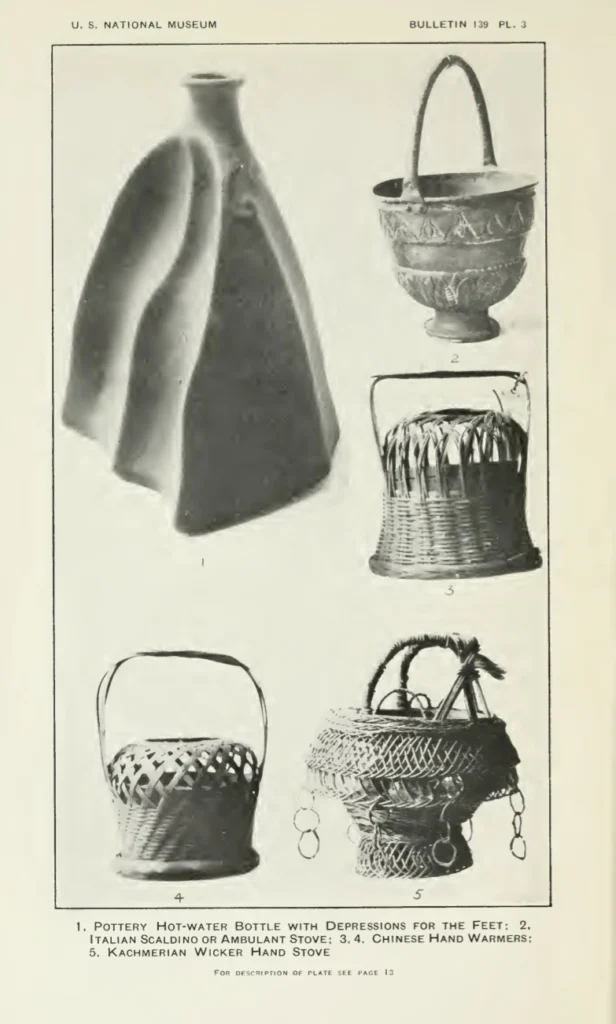
photo/kanzandmuhul
Ancient Techniques and Evolution Over Time
Traditionally, it was a skill passed down through families. The techniques have remained largely unchanged, preserving an ancient craft that continues to thrive despite the rise of modern heating technologies.
Materials Used in Kangri Making
Willow Wicker – The Core Material
The basket surrounding the clay pot is woven from willow wicker, a natural material that provides durability and an insulating layer. The willow is carefully harvested, treated, and then shaped by artisans, giving each its unique look.
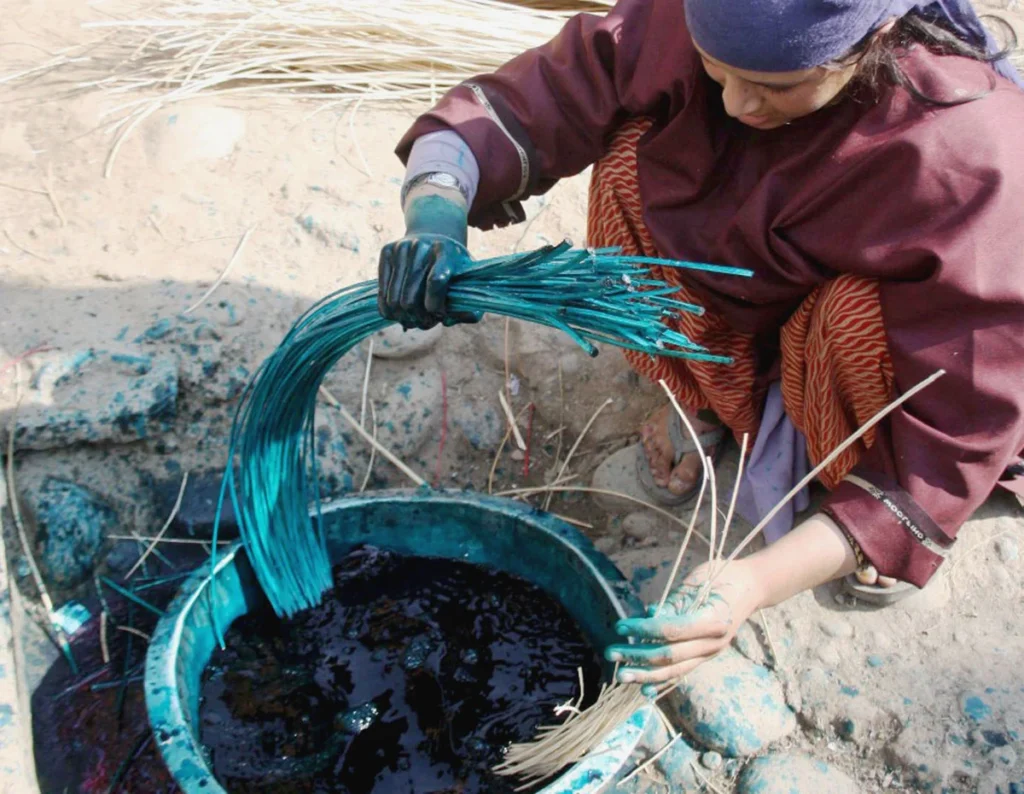
photo/kashmirlife
Clay Pot – Structure and Design
The clay pot, is often hand-crafted where charcoal is placed. Artisans shape the clay meticulously to ensure it retains heat without cracking under high temperatures, making it an efficient mini-furnace.
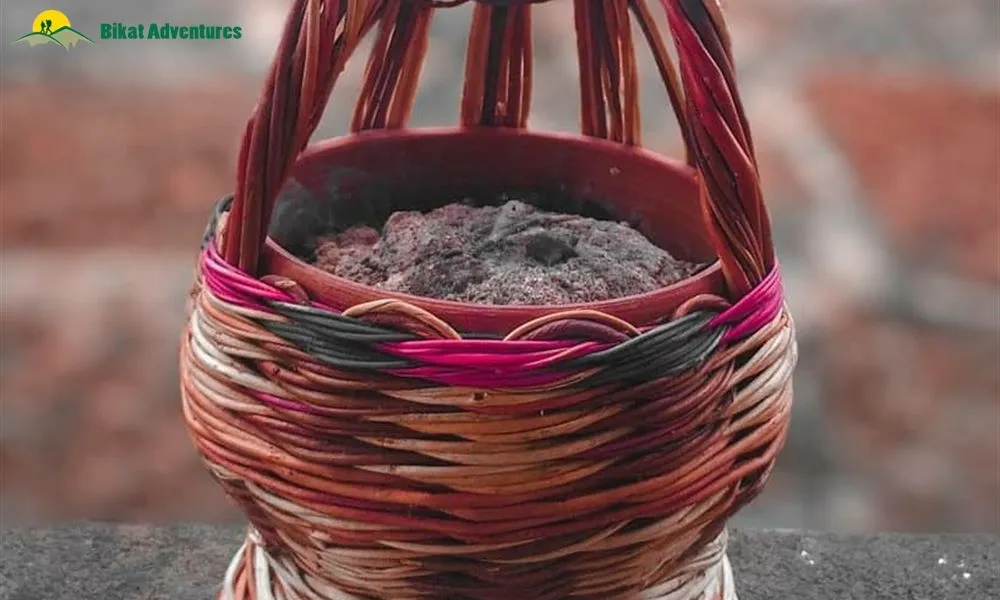
Charcoal and Its Role
Charcoal is the fuel that produces a consistent and lasting heat. The type of charcoal used matters; high-quality charcoal ensures longer-lasting warmth and reduces smoke, enhancing the practicality.
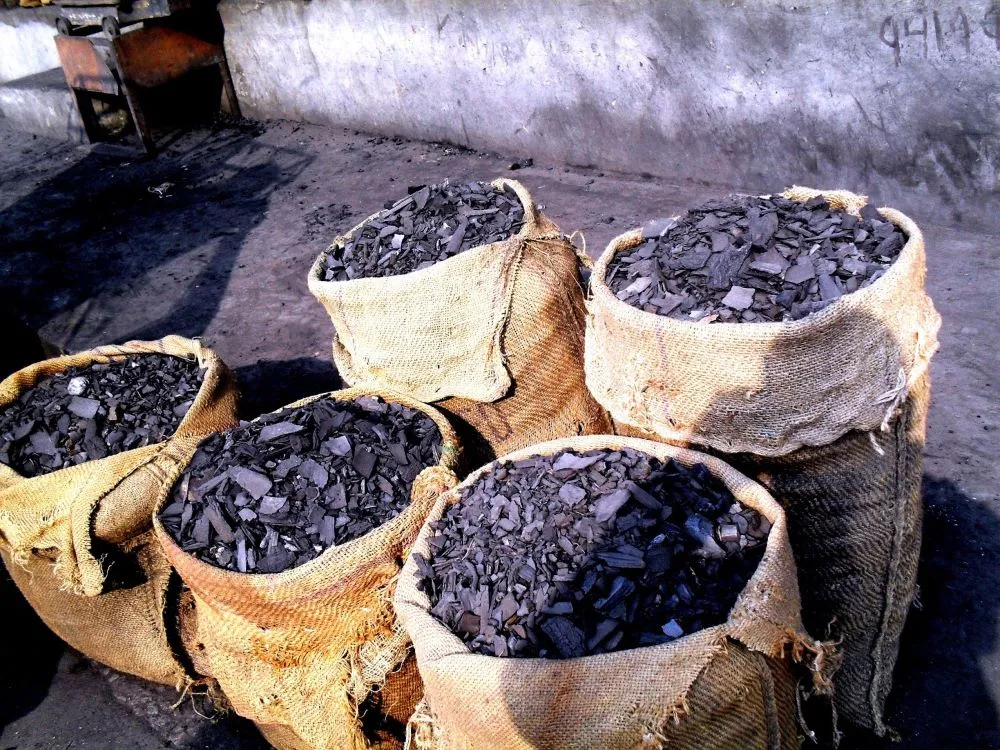
photo/chinarshade
Craftsmanship in Kangri Making
Step-by-Step Process of Crafting a Kangri
it starts with preparing the clay pot, shaping it carefully, and allowing it to dry and harden. Meanwhile, artisans work with willow wicker, creating intricate patterns around the pot. The process is both labor-intensive and artful, requiring precision at every step.
Role of Skilled Artisans in Kangri Production
Artisans dedicated to this craft come from generations of makers. Each Kangri is an artwork, bearing the personal touch and skill of the maker. These craftsmen keep the tradition alive, often working with minimal tools but a wealth of knowledge.
Training and Skill Transfer Across Generations
It is a familial craft, with skills passed down from elders to younger generations. However, with modern challenges, fewer young people are learning the trade, putting this heritage at risk.
Also Read – India-Kashmir: Carpet Weaving A Rich Tapestry
Types of Kangris
Simple vs. Ornamental
There are two main types: the simple, practical ones and ornamental varieties that are highly decorated and often used for gifting or display. Ornamental may feature colorful designs, beads, or painted details, highlighting Kashmiri artistry.
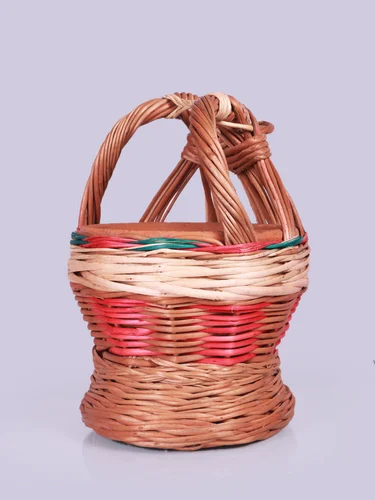
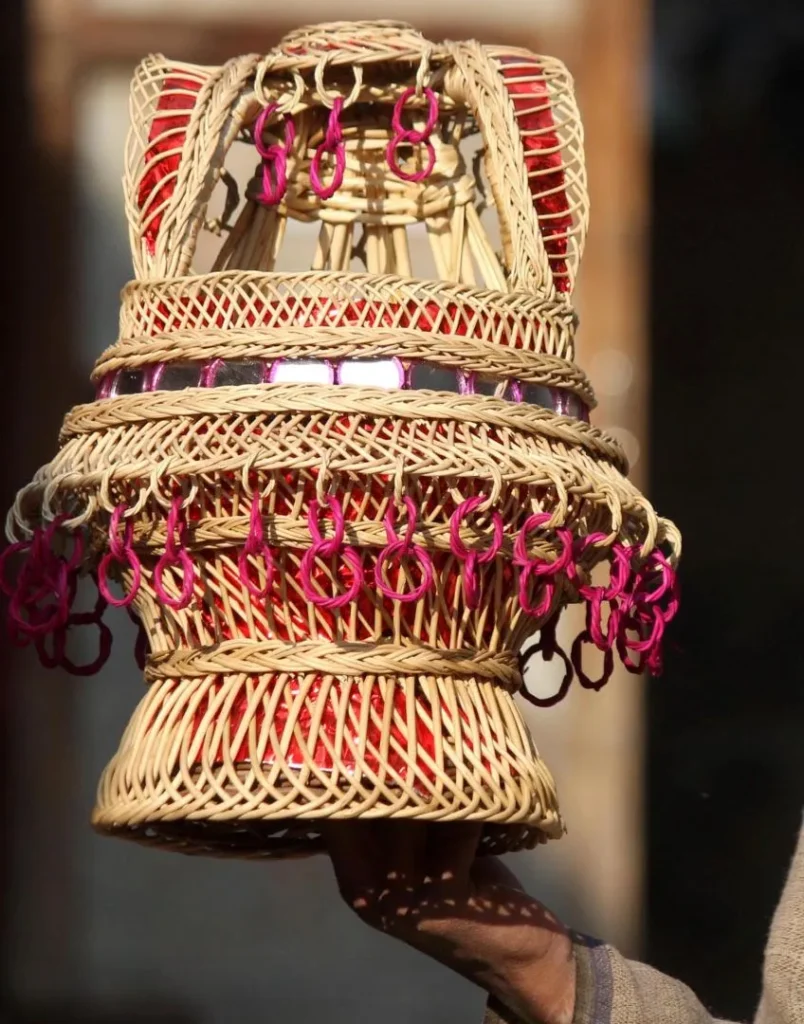
photo/indiamart/vajiramandravi
Differences in Size, Shape, and Decor
They vary in size and shape depending on their intended use. Some are small and portable, while others are larger, designed for extended warmth. Decorative features also differ, showcasing each artisan’s unique style.
Symbolism and Cultural Importance
Kangri as a Symbol of Kashmiri Identity
To Kashmiris, It is more than just a heater; it’s a cultural emblem representing warmth, resilience, and tradition. This humble heater is a common sight during winter, strengthening its symbolic value in Kashmiri society.
Kangri in Local Festivals and Celebrations
During certain festivals, they are decorated and used as a part of celebrations. They may also feature in folk art and poetry, showcasing their significance in Kashmiri culture.
Kangri in Modern Kashmiri Society
Changing Usage and Practicality
While urban areas may lean towards electric heaters, they remain widely used in rural parts of Kashmir. They’re not only affordable but also adaptable to daily routines, making them relevant even in the modern world.
Kangri as a Cultural Icon in Art and Literature
It often appears in Kashmiri art, literature, and even clothing designs. It is a motif that symbolizes warmth and heritage, a recognizable emblem of Kashmir’s winter traditions.
Challenges Faced by Kangri Makers Today
Decline in Demand Due to Modern Alternatives
With the advent of new heating technologies, the demand has dropped, posing economic challenges for artisans. Electric heaters and central heating systems, although costly, are gradually becoming the preferred option for some.
Economic Hardships for Artisans
Makers face financial difficulties as the market shrinks. The craft is labor-intensive but does not always yield a sustainable income, leading many artisans to abandon for more profitable ventures.
Impact of Environmental Concerns
Using charcoal raises environmental issues, especially with growing awareness about air quality and emissions. This poses a dilemma as people look for greener alternatives.
The Future of Kangri Making
Reviving Interest Through Tourism
Efforts are being made to promote as unique souvenirs, increasing awareness and demand among tourists. This could potentially provide an economic boost for artisans, preserving the craft for future generations.
Adapting Kangri Design for Modern Markets
Some artisans are experimenting with modern designs and eco-friendly materials, broadening the appeal. These adaptations may help remain relevant in a rapidly changing market.
Role of Government and NGOs
Support from the government and NGOs could be instrumental in preserving. Programs that provide financial aid or promote Kashmiri crafts can empower artisans and help revive the tradition.
Environmental Impact and Sustainability
Sustainability of Willow Wicker Sourcing
Willow wicker, though renewable, must be harvested sustainably to avoid ecological harm. Implementing sustainable practices can help ensure that it remains eco-friendly.
Eco-Friendly Alternatives
Some are exploring alternatives to charcoal, such as smokeless fuels, to reduce the environmental impact. These innovations could help the craft evolve while preserving its cultural essence.
Kangri Making In Kashmir at a Glance:
| Section | Key Points |
|---|---|
| Introduction | Significance in Kashmiri winters, its warmth, cultural heritage, and identity. |
| What is a Kangri? | – Description: An earthen pot with charcoal, wrapped in a woven willow basket for insulation. – Purpose: A close, portable source of warmth traditionally used by Kashmiris during winter. |
| Origin and History | – Historical Significance: Believed to have Central Asian influences, now a uniquely Kashmiri symbol. – Evolution: Techniques remain unchanged, with passed down through generations. |
| Materials Used | – Willow Wicker: Durable and insulates the basket. – Clay Pot: Handcrafted, retains heat, resists high temperatures. – Charcoal: Powers that produce lasting heat with minimal smoke. |
| Craftsmanship | – Process: Shaping the clay pot, weaving the willow wicker around it. – Artisans: Skilled craft, passed through families, using minimal tools but vast knowledge. – Skill Transfer: Taught within families. |
| Types of Kangris | – Simple vs. Ornamental: Simple for utility, ornamental for decoration and gifting. – Varieties: Differences in size, shape, and decoration styles. |
| Symbolism and Cultural Importance | – Kashmiri Identity: Represents resilience and warmth. – Cultural Presence: Features in local festivals, Kashmiri art, and poetry as a symbol of winter and community. |
| Modern Usage | – Changing Usage: Urban areas favor modern heaters, but they are still prevalent in rural regions. – Cultural Icon: Commonly depicted in art, literature, and even clothing designs. |
| Challenges in Kangri Making | – Decline in Demand: Rising preference for electric heaters. – Economic Hardships: Reduced demand impacts artisans’ livelihoods. – Environmental Concerns: Issues with charcoal’s impact on air quality. |
| Future of Kangris | – Tourism: promoted as souvenirs to support artisans. – Design Adaptations: Some artisans experiment with modern, eco-friendly designs. – Government Support: Funding and programs can help preserve this craft. |
| Environmental Impact | – Willow Wicker: Sourcing must be sustainable. – Eco-Friendly Alternatives: Exploring smokeless fuels to reduce environmental impact while preserving tradition. |
Conclusion
This craft stands as a cherished symbol of Kashmiri heritage. Its unique design, cultural significance, and functional appeal embody the warmth and resilience of Kashmir’s people. Though modernity presents challenges, efforts to preserve and adapt this craft are vital in keeping a treasured tradition alive.
FAQs
- What is a Kangri, and how is it used?
- It is a traditional Kashmiri heater made from an earthen pot filled with charcoal, used to stay warm during winter.
- How is a Kangri made?
- They are handcrafted with a clay pot surrounded by a woven willow basket, following traditional techniques.
- Is the Kangri safe to use?
- Yes, but careful handling is necessary. The basket insulates heat, though users must handle it responsibly, especially with hot charcoal inside.
- Why is the Kangri important in Kashmiri culture?
- It represents Kashmiri identity, symbolizing warmth, resilience, and tradition in everyday life.
- Are there eco-friendly versions of the Kangri?
- Artisans are exploring smokeless fuels and sustainable materials, creating eco-friendly Kangri options.
One thought on “India-Kashmir: Kangri A Traditional Winter Companion”